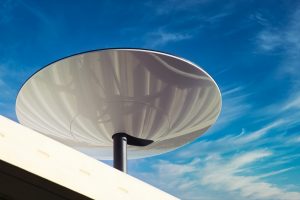- 🚀 SpaceX counters AT&T and Verizon’s claims as “baseless” with a strong rebuttal to the FCC.
- 📡 SpaceX and T-Mobile’s partnership aims to eliminate mobile dead zones with Starlink Cellular.
- 📄 AT&T and Verizon oppose SpaceX’s FCC waiver for Starlink to operate at higher power levels.
- 📊 AT&T’s study claims Starlink will reduce network downlink throughput, but lacks shared data.
- 🤝 AT&T and Verizon have ties with SpaceX competitor AST SpaceMobile, seeking FCC support against Starlink.
The ongoing battle between SpaceX and telecom giants AT&T and Verizon has intensified with recent claims and counterclaims surrounding the expansion of Starlink Cellular. The drama unfolds around regulatory approvals, competitive dynamics, and the pursuit to eliminate mobile dead zones. This blog post delves into the intricacies of the dispute and what it means for the future of connectivity.
Understanding the Controversy
SpaceX’s ambitious plan to extend Starlink’s capabilities into the realm of mobile communications has met significant resistance from established telecom players AT&T and Verizon. This confrontation highlights several key aspects:
- Rebutting the “Baseless” Claims:
SpaceX has fired back against what they label as “baseless” claims by AT&T and Verizon, accusing them of attempting to handicap their competitor, T-Mobile. The allegations center around technical and operational concerns that SpaceX believes are unfounded and serve primarily anti-competitive motives. - The Partnership with T-Mobile:
In a strategic move to overcome mobile dead zones, SpaceX partnered with T-Mobile to launch Starlink Cellular. Announced in 2022, this partnership aims to provide ubiquitous connectivity by leveraging SpaceX’s satellite technology—a promising advancement that threatens to disrupt traditional telecom models.
The Technical Dispute
The crux of the dispute lies in SpaceX’s request for an FCC waiver that would allow Starlink Cellular to operate beyond typical radio frequency parameters. Here’s what you need to know:
- AT&T and Verizon’s Opposition:
Both companies have vocalized their opposition to the waiver, claiming that SpaceX’s proposal could result in excessive radio interference. They argue that increased interference would degrade network performance, impacting the quality of service for their customers. - AT&T’s Study Allegations:
AT&T conducted a study suggesting that permitting Starlink to operate at the proposed parameters would reduce network downlink throughput by an average of 18%. However, SpaceX has criticized this study for lacking transparency, noting that AT&T has not provided the underlying data to substantiate these claims.
The Competitive Landscape
AT&T and Verizon’s resistance isn’t just about technicalities; it’s rooted in preserving their market dominance.
- Ties with AST SpaceMobile:
Both telecom firms have alliances with AST SpaceMobile, a rival to SpaceX in the satellite network arena. Their strategic partnership signifies a shared interest in curbing SpaceX’s potential market disruption.
The Broader Implications
This conflict is emblematic of the broader battle between traditional telecom companies and emerging satellite-based networks. Here are the potential ramifications:
- For Consumers:
If SpaceX succeeds, consumers might benefit from improved connectivity, especially in remote areas with traditionally weak network coverage. - For the Industry:
The outcome of this regulatory and competitive tussle could set significant precedents for how new technologies integrate and compete with established players in the telecom industry.
Final Reflections
As the FCC deliberates on SpaceX’s waiver request and assesses the validity of AT&T and Verizon’s claims, the future of mobile connectivity hangs in the balance. This case is a defining moment in the ongoing evolution of telecommunications, reflecting the innovation-driven shifts reshaping the landscape.





